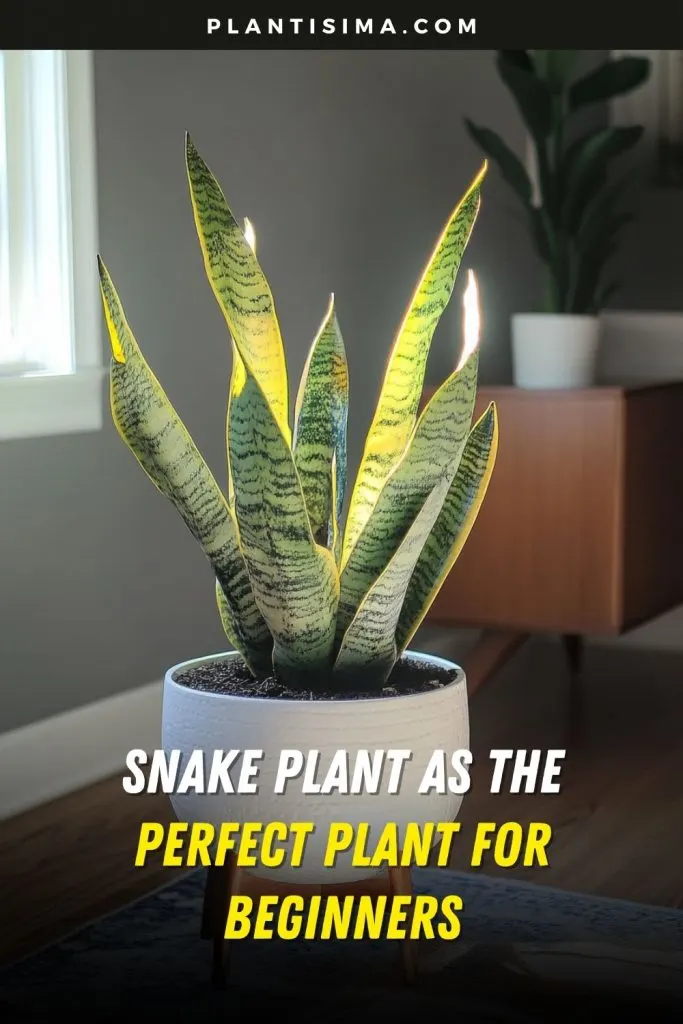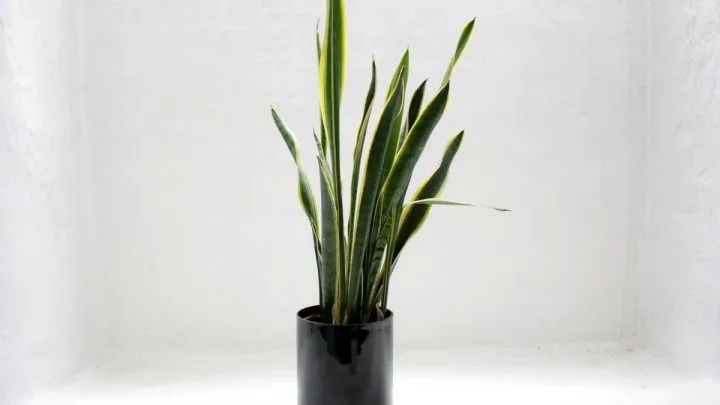In this article, we will talk about one attractive perennial that comes from tropical Africa, commonly called Mother-in-law’s tongue. Or better known as the snake plant (dracaena trifasciata).
The snake plant belongs to the genus Sanseveria in which there are more than 50 species. It is named after the Prince of San Sever.
If you are someone who is not very dedicated to plant care, the snake plant is the right choice for your home.
It does not require much water or any special care and is almost impossible to kill by not watering. The only thing you need to do is provide the snake plant with a place with indirect sunlight.
But if you place your snake plant in low light areas, there is still no reason to worry. They can also grow even when not in a bright light place or direct sun.
Due to the appearance of its leaves, it always looks fresh even if you forgot to water it for more than a dozen days.
According to NASA research, this plant is an excellent air purifier and removes some toxins such as benzene and formaldehyde.
All in all, if you are a beginner and want a plant that is easy to maintain and at the same time good for your environment, choose the Snake plant.
What Does A Snake Plant Look Like?
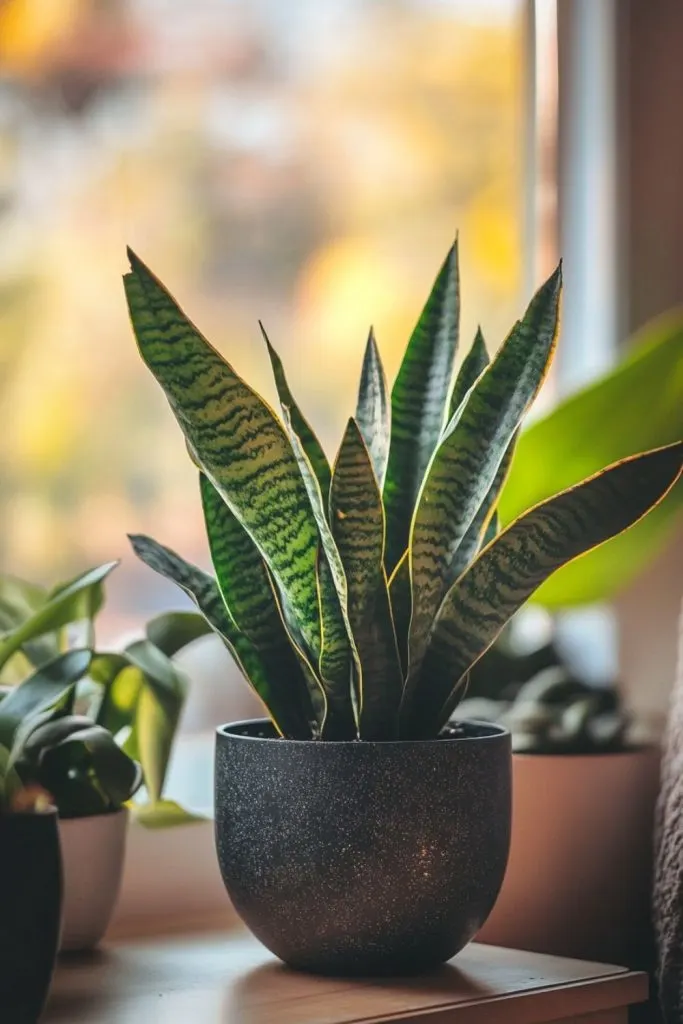
Mother-in-law’s tongue, Snake plant has very long narrow leaves that look like swords. They always stand upright, and that’s because they’re very rigid.
Mostly Snake plant leaves can grow several feet tall. These sword-like leaves are dark green interspersed with yellow and white vertical stripes.
There are actually about 70 different species of Sansevieria. They all look less or more alike. Some of them are rhino grass (sansevieria desertii), sansevieria trifasciata, sansevieria masoniana, and white snake plant (bantel’s sensation).
How To Grow Snake Plants
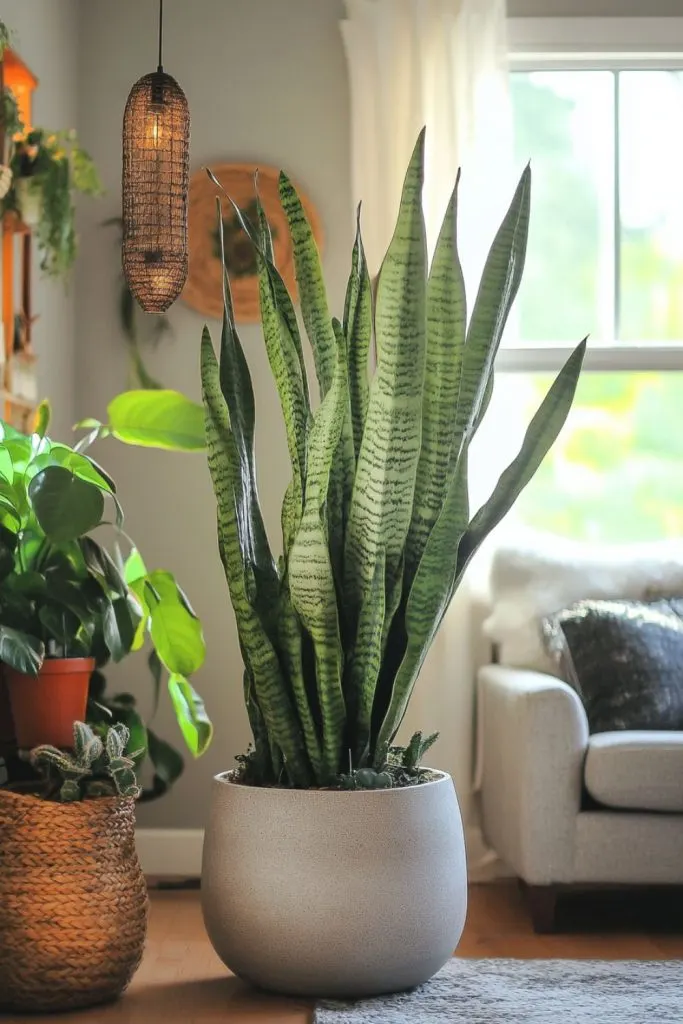
If you want an adult plant or a rare snake plant, it is best to buy one at a flower shop because it is a slow grower.
Ideal growing conditions would be a place with bright indirect light, where there is no direct sunlight. Water it lightly, it really doesn’t require a lot of water, so water it only when you see the potting soil dry.
If you see yellow leaves, it means that the plant is over-watered. This can usually happen in the winter because it needs less water (You should be more careful in the winter to prevent this from happening).
The yellow leaves send a sign. Be careful when watering. On the other hand, if the leaves start to wrinkle, it is a sign that it is not watered enough.
You can fix this condition by watering it a bit in the next few days and it should recover. It would be good to wipe the dust from its leaves sometimes. The room temperature should not be below 50 ° F (10 ° C).
How To Plant Snake Plants
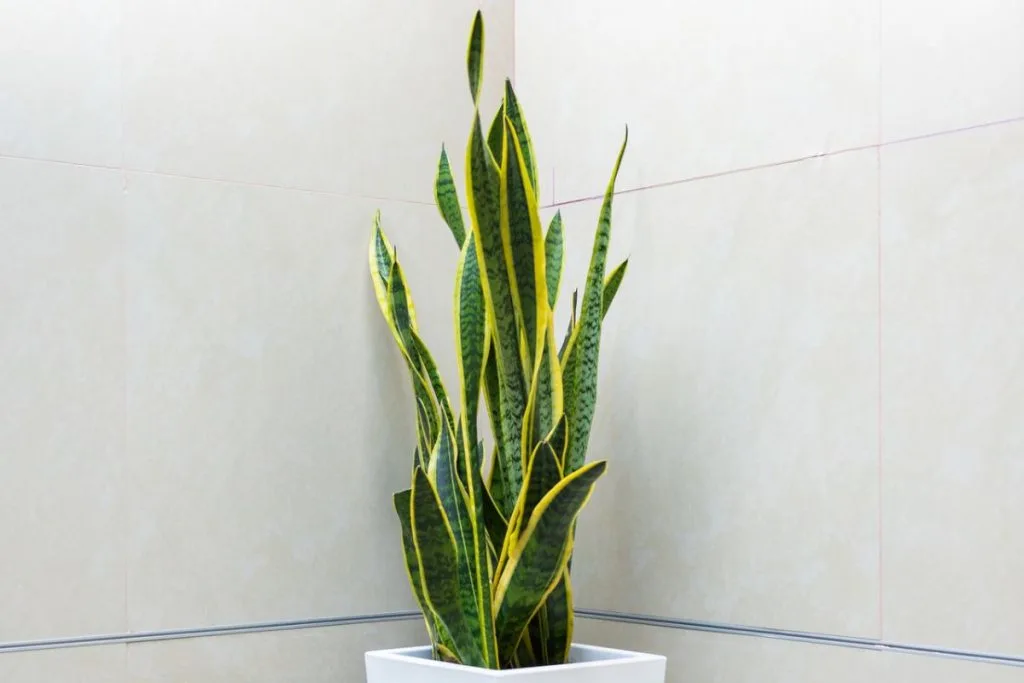
What is important when it comes to ordinary pots in which you buy flowers is to make sure that the plant has not outgrown them.
If you want to keep it in the pot you bought it in, it’s okay only if the roots aren’t protruding from the bottom.
If you want a healthy leaf, make sure your plant is in a well-draining potting mix. You can plant it in a decorative pot or perhaps in a clean jar.
When you see that it has outgrown and needs transplanting, take only a slightly larger pot with a drainage hole and use potting soil for houseplants when transplanting.
This is a slow-growing plant and you will not have to transplant it often (every 2-3 years). These plants have shallow roots, so these pots should be shallow as well.
Is A Snake Plant Suitable For Garden Planting?
The answer to this question depends on your location. If the garden is where you want to plant a snake plant in an area where there is never frost, snow, or freezing temperatures, then yes. If this is not the case then no.
Also, if the place is extremely rainy, this would not be the best solution because succulent plants do not like too wet soil as this can cause root rot.
Snake plants thrive as outdoor plants in places where it is dry and where temperatures are higher.
Do You Need To Fertilize And How Often?
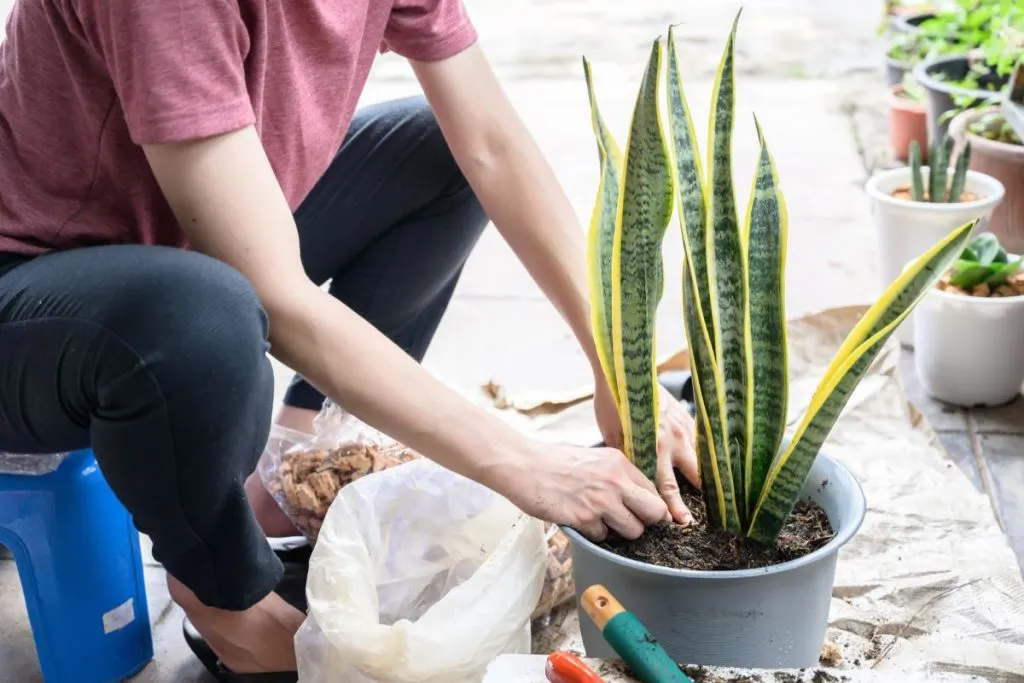
It would be desirable if you fertilize it in the period from April to October because that is the growing season. You can use diluted fertilizer for houseplants. Leca for plants has also proven its usefulness for snake plants.
Always make sure that you follow the instructions for using the fertilizer correctly so that you do not harm the plant.
Never take fertilizer without first checking which fertilizer is right for which plant.
Propagation Of The Snake Plant
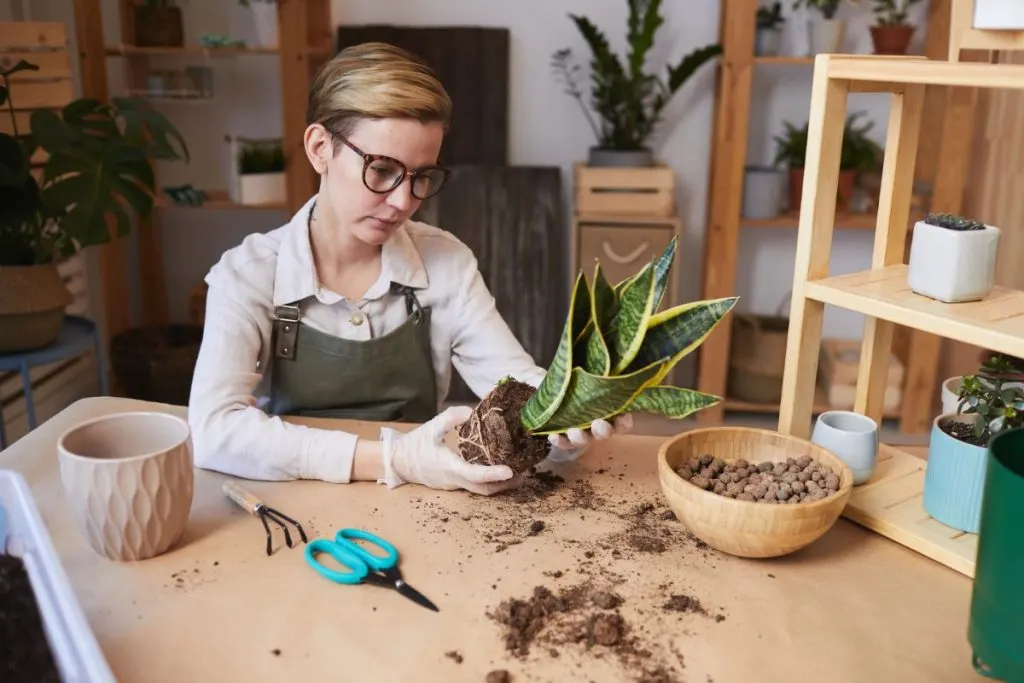
If you want to propagate snake plants, it is easiest to do it by dividing. All you have to do is separate the leaf and a piece of root with a sharp knife and plant it in a new small pot.
You can also do it by taking leaf cuttings, but if you are a beginner, it is better to do it in an easier way.
Propagating the plant by cuttings is a long process and requires a lot of patience.
Simply cut the leaf at the root or just a piece of leaf or a top inch using a sharp knife.
You can put it in the ground or water, but you have to change the water at least once in 10 days. If you put the cuttings in a transparent glass bottle or vase, you will be able to observe the process of root development.
If you decide to plant in the soil, make sure that you always keep the soil moist so that the roots develop faster.
For the overall development, ie. it may take up to 10 months for new leaves to appear.
Pruning Snake Plants
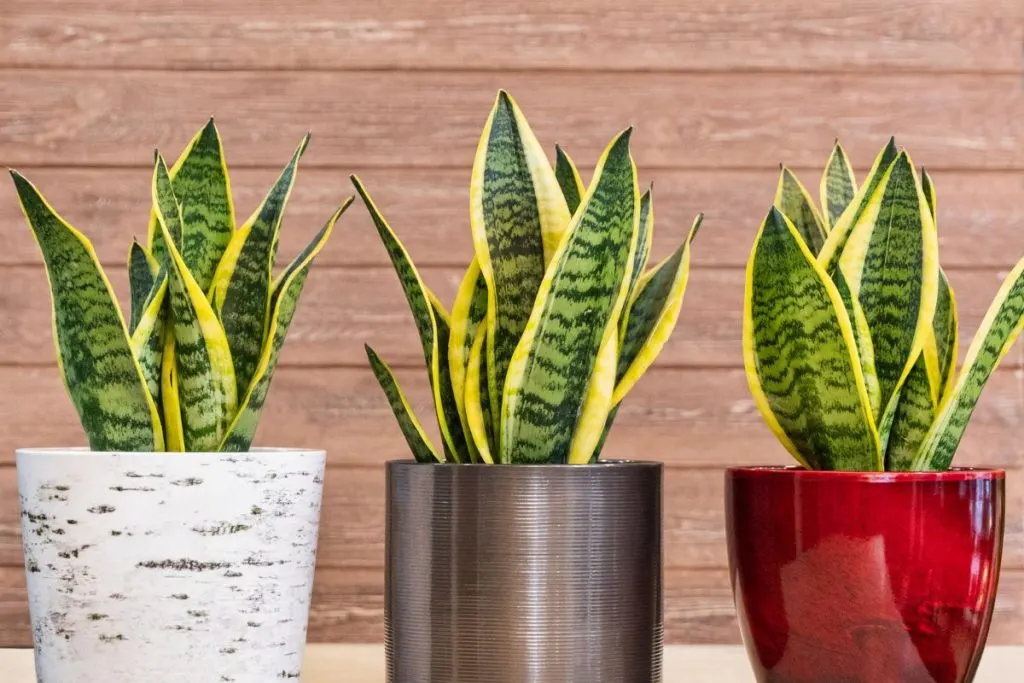
When it comes to pruning plants, this will rarely be necessary. You only do this if you see dead or dying leaves.
If this happens, make sure you use clean and sterile scissors. What you should do is cut the leaf at the very base so that it can grow again.
If only brown ends appear, you have to keep in mind that if you cut them, they will not grow anymore, so it is better to cut the whole leaf and thus beautify the appearance of your plant.
Snake Plant Watering
The question is: How often to water a snake plant? What you need to remember is that snake plants are succulents and do not need much water. They store water well in their roots and leaves.
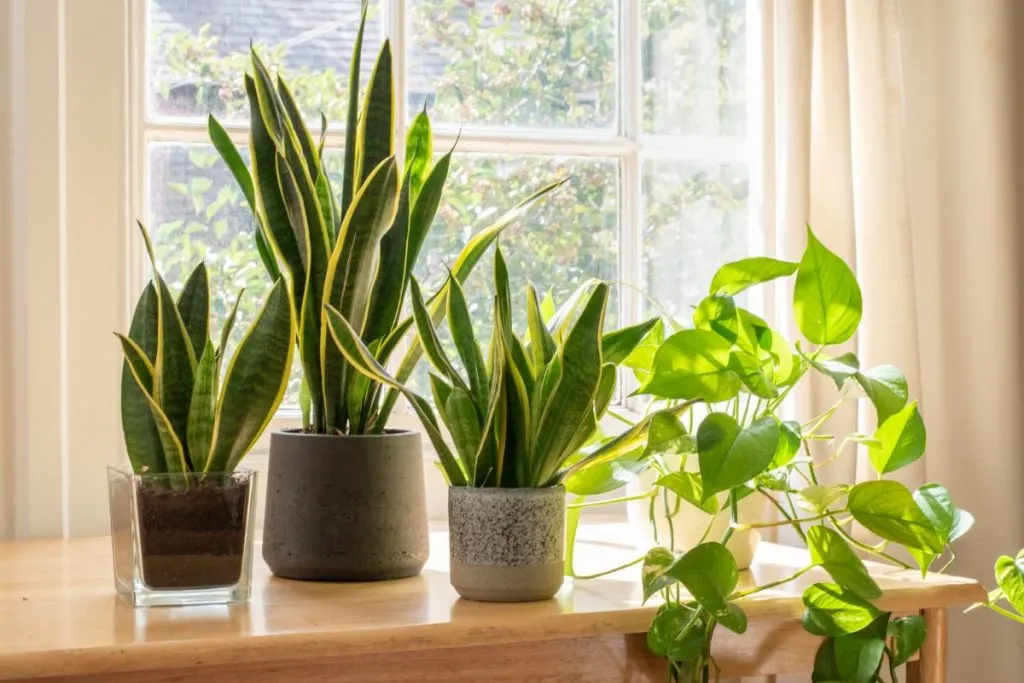
If you want to water them, check that the soil is dry. It’s hard to believe, but it’ll be happier if you forget to water it than if you water it before it’s needed.
Excessive watering leads to the destruction of the snake plant. Touch the soil with your hand to make sure it is dry and it is time to water again.
Soil mixture can also affect excessive watering and plant destruction. It is best to use a potting mix where 50 percent is soil for houseplants and 50 percent is mixed soil for succulents.
What Kind Of Light Is Suitable For A Snake Plant?
Snake plant is very grateful when it comes to what kind of lighting it needs. It can grow well in well-lit areas, but also in rooms with low light. Indoors or in the spring or summer outdoors in the sun, everything works for the snake plant.
But usually, the variegated snake plant grows better and faster in a place with brighter light. If you don’t know where the right place is, place several from the south or west window.
What you need to pay attention to is that the snake plant is not exposed to direct sunlight, because that can cause burns on the leaves. This can usually happen if you keep the plant outdoors.
In any case, when buying, see if there are any markings on the pots of your snake plant. Certain species come with instructions on light needs.
Is My Snake Plant Healthy?

If you want to know if your plant is healthy, the most important thing is to recognize ways to find out.
Healthy snake plants have white, firm roots. If they turn black, it means your snake plant suffers from root rot. It is a killing disease. Your plant is sending you a sign this way.
It happens when the roots have more water than oxygen. Too much water can kill them. How can you save the plant? Simply trim away the dead roots, put the plant in drier conditions, and do not overwater it again.
How To Get Rid Of Spider Mites?
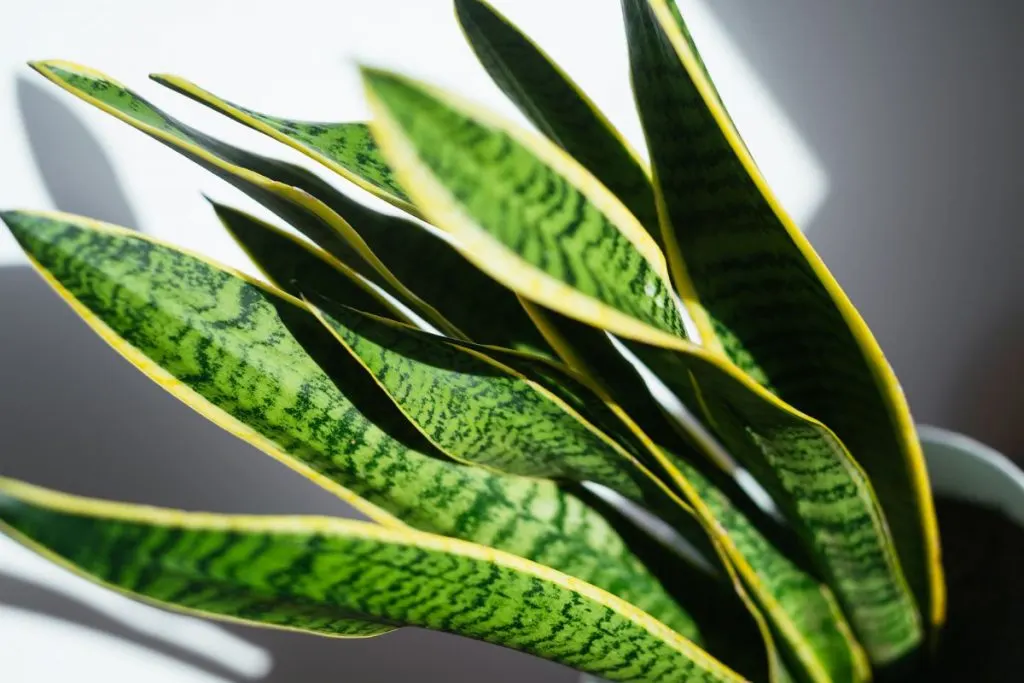
If you see that your snake plant has been attacked, that is, you see small mites or bugs, it is important to act in a timely manner.
Although they are small and seemingly harmless, if you don’t get rid of them in time, they can destroy your snake plant.
Spider mites are specific to this type of plant because they commonly have drier soil.
How can you prevent the spread of spider mites and get rid of existing ones?
The best way is to treat the plant with some natural pesticide. Simply mix 1 liter of water, 2 teaspoons of neem oil, and 1 tsp. liquid Castilian soap.
Stir well, then to get rid of mites and bugs, spray profusely.
Is The Snake Plant Safe For A House With Children?

If you have toddlers or pets at home, make sure it is out of their reach as it can be toxic if eaten. Eating leaves can cause many side effects such as diarrhea and nausea.
If you can place the plant out of the reach of your children or pets, you don’t need to worry. If this is not the case, then you should reconsider whether the snake plant is the right choice for you.
Health comes first, don’t risk your child or pet accidentally swallowing part of the plant as this can cause poisoning and stomach problems.
Advantages Of The Snake Plant

Snake plants are ideally placed in the bedroom. Peer-reviewed studies are known as air purifiers because they are removing toxins such as toluene, xylene, benzene, trichloroethylene, and formaldehyde.
They also have the ability to convert carbon dioxide into oxygen during the night and thus regulate healthy airflow.
